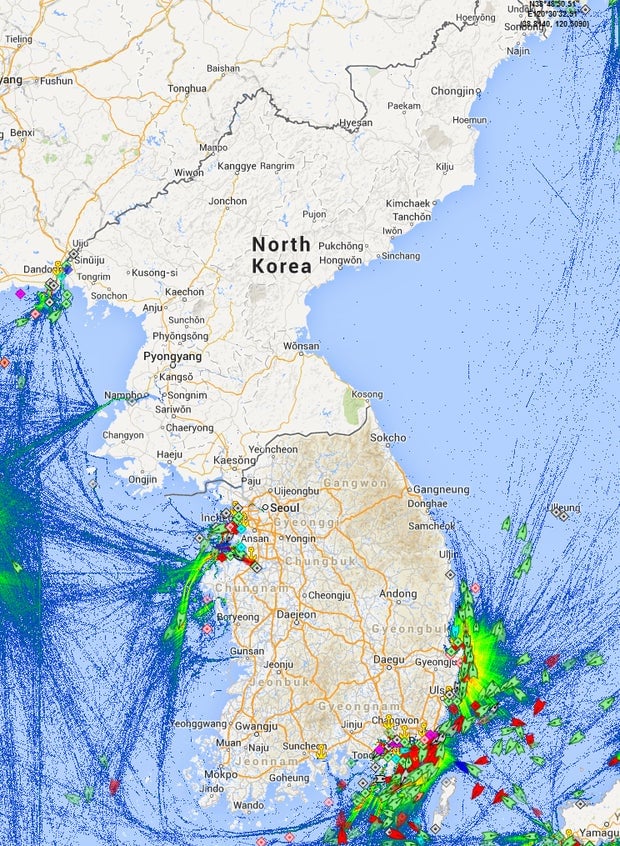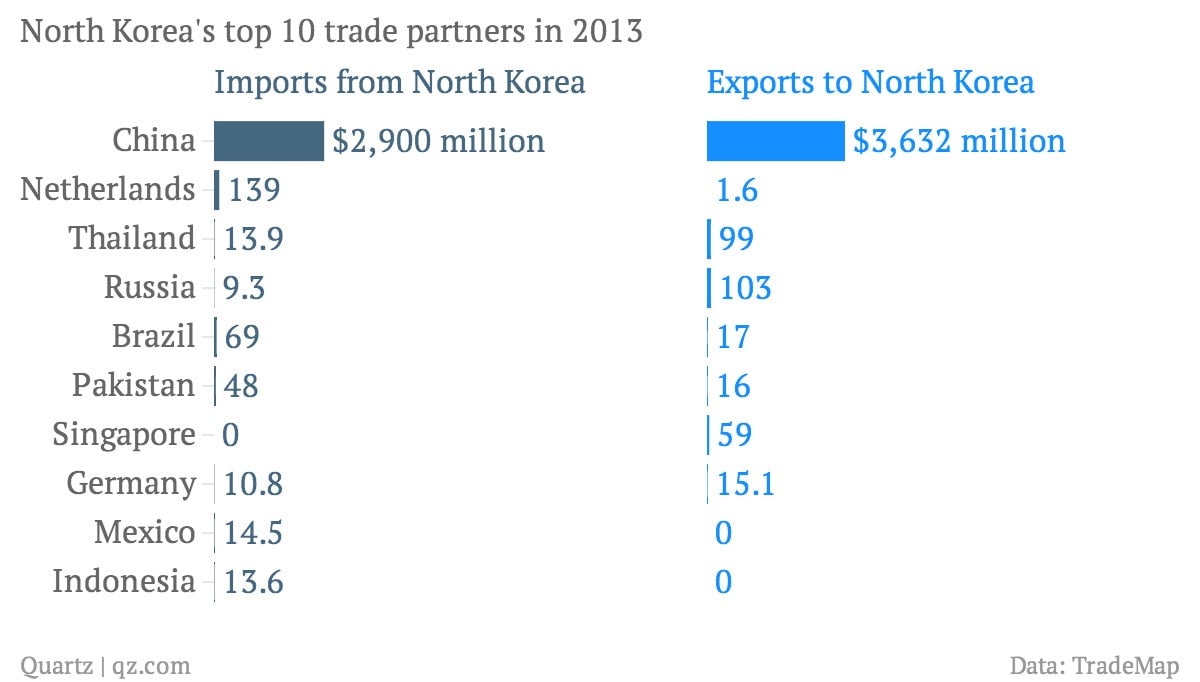North Korea is a shipping dead zone—but it’s getting weapons, ivory, and drugs out somehow
Northeast Asia is home to the most bustling cargo-ship traffic in the world. And though much of that flows through the South China Seas, three of the planet’s top 10 busiest container ports—Busan, Qingdao, and Tianjin—are in the upper corner of sea flanked by China, Japan, and South Korea.

Northeast Asia is home to the most bustling cargo-ship traffic in the world. And though much of that flows through the South China Seas, three of the planet’s top 10 busiest container ports—Busan, Qingdao, and Tianjin—are in the upper corner of sea flanked by China, Japan, and South Korea.
But the volley of port activity in the region almost entirely skirts the coasts of one country: North Korea, of course. This is particularly vividly illustrated in the map above, which plots cargo-ship traffic activity from MarineTraffic.com, as CityAM reports.
Not that this is especially surprising. Known as the Hermit Kingdom, the country of 25 million is notoriously walled off to foreign contact and trade. That’s largely thanks to the authoritarian rule of the Kim regime, which has directly stymied the country’s economic development while also inviting international sanctions forbidding shipments of things like weapons and luxury goods.
That’s not to say commerce isn’t happening at all, though. In 2013, the last year for which there was data, North Korea imported $4 billion in goods—mostly oil, machinery, and electronic equipment—and exported $3.3 billion in coal, apparel, metal, and a smattering of other goods, according to TradeMap.
Nearly all of that trade—90% of imports and 88% of exports—is with China.

Those goods might have changed hands in Namp’o. Located on North Korea’s west coast, it’s the only port that saw any activity, based on MarineTraffic.com’s map—and that appeared to be between Namp’o and Weihai or Yantai, port cities in Shandong province that crook into the Yellow Sea. That said, the vast majority of trade likely happened across North Korea’s northern land border with China, near the buzzing Chinese port of Dandong.
As City AM reports, the North Korean dead zone might start to show signs of life as South and North Korea develop Rajin, a port along the Hermit Kingdom’s northeast coast situated close to Russia. Three big South Korean companies—steelmaker Posco, Hyundai Merchant Marine, and Korail, the state-owned rail monopoly—appear to be interested, as Korea Real Time reports.
Rajin is connected to the Rason special economic zone, which China began developing in 2011 as a means of opening up a port for its northernmost provinces, Jilin and Heilongjiang. In late 2012, China completed a highway; now it’s working on getting crossborder electricity supply up and runnings, says KRT.
But even with its ports mostly moribund, North Korea is managing to get goods in and out somehow. Earlier this year, Panama busted a North Korean ship delivering fighter planes and surface-to-air missiles to Cuba, buried under a heap of sugar. This sort of trade—which also reportedly flows to North African countries and to Syria—is conducted through a “network of shadowy front companies with offices stretching from Vladivostok to Singapore,” as Scott Snyder of the Council on Foreign Relations explains.
Another recent report revealed that North Korea is now trading illegal drugs, counterfeit banknotes, and endangered species in a bid to raise hard currency needed to fund its nuclear and missile programs. However, the Committee for Human Rights in North Korea report says that since 2005, that smuggling trade has shifted away from maritime routes, traveling instead via overland channels into China (pdf, p.11.)